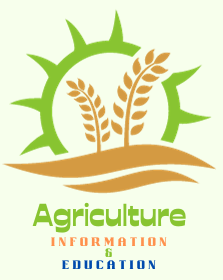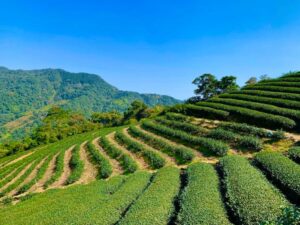Introduction:
Reducing the cost of cultivation in agriculture is a multifaceted challenge that requires a strategic and integrated approach. Farmers and agricultural businesses worldwide are continually seeking ways to optimize resources, increase efficiency, and enhance sustainability while maintaining or improving yields. This article explores various strategies and practices that contribute to the decreased cost of cultivation in agriculture, encompassing aspects such as technology adoption, sustainable practices, resource management, and financial considerations.
Precision Agriculture:
Precision agriculture involves the use of advanced technologies to optimize farming practices. Global Positioning System (GPS) technology, sensors, and drones play pivotal roles in this approach. GPS-guided tractors and machinery enable farmers to precisely navigate fields, reducing overlap and avoiding unnecessary resource application. Drones equipped with sensors can provide real-time data on crop health, allowing for targeted interventions and minimizing input wastage. By adopting precision agriculture, farmers can achieve higher efficiency in resource use, leading to reduced costs.
Crop Rotation and Diversification:
Crop rotation and diversification are age-old practices that remain relevant for modern agriculture. Planting different crops in sequence helps break pest cycles, improves soil health, and reduces the reliance on synthetic inputs. This not only lowers cultivation costs but also contributes to sustainable farming practices. Crop diversification can also provide economic benefits by tapping into different markets and reducing vulnerability to price fluctuations in a single crop.
Improved Water Management:
Water scarcity is a significant concern in agriculture, making efficient water management crucial. Advanced irrigation systems, such as drip irrigation, help deliver water directly to the roots, minimizing wastage. Additionally, soil moisture sensors can assist in determining the optimal timing and quantity of irrigation. Implementing water-saving techniques not only reduces costs associated with water usage but also enhances the resilience of farming operations in the face of changing climate conditions.
Optimized Fertilizer Use:
Applying fertilizers judiciously based on soil nutrient levels is essential for cost-effective agriculture. Conducting regular soil tests allows farmers to tailor fertilizer applications to the specific needs of the crops. This prevents over-fertilization, reduces input costs, and minimizes the environmental impact associated with nutrient runoff. Implementing precision nutrient management contributes to sustainable farming practices while maintaining or improving crop yields.
Integrated Pest Management (IPM):
Integrated Pest Management (IPM) is a holistic approach to pest control that combines biological, cultural, and chemical methods. By promoting natural predators, using crop rotation, and deploying targeted pesticides when necessary, farmers can effectively manage pests while minimizing the negative impact on the environment. Adopting IPM practices not only reduces the reliance on costly chemical inputs but also contributes to the long-term health of agroecosystems.
Mechanization and Automation:
Modernizing farm operations through mechanization and automation is a key strategy for reducing labor costs and improving overall efficiency. Tractors, harvesters, and other machinery can perform tasks more quickly and accurately than manual labor, leading to cost savings. Automation technologies, such as robotic systems for planting and harvesting, are evolving and have the potential to further streamline operations and reduce labor dependency.
Energy Efficiency:
Energy costs constitute a significant portion of agricultural expenses, particularly in mechanized and intensive farming systems. Implementing energy-efficient practices, such as using fuel-efficient machinery and exploring alternative energy sources like solar power, can lead to substantial cost reductions. Adopting sustainable energy solutions not only benefits the farmer economically but also contributes to the overall environmental sustainability of agriculture.
Knowledge and Training:
Empowering farmers with knowledge and training on modern and sustainable agricultural practices is a fundamental aspect of cost reduction. Education programs can cover topics such as soil health management, water conservation, and the use of new technologies. Informed farmers are better equipped to make decisions that optimize resource use and minimize costs while ensuring the long-term viability of their operations.
Economies of Scale:
Consolidating land holdings and operations to achieve economies of scale is a strategy that larger farms often employ. Bulk purchasing of inputs, shared machinery, and centralized management can lead to cost efficiencies. While small-scale farmers may face challenges in achieving the same scale, cooperative farming models and collaborative initiatives can enable them to benefit from shared resources and reduce individual production costs.
Government Support and Subsidies:
Government policies and support programs can significantly impact the cost of cultivation for farmers. Subsidies for essential inputs, such as seeds and fertilizers, and financial incentives for adopting sustainable practices can ease the financial burden on farmers. Governments can also invest in research and extension services to disseminate information about cost-effective and sustainable farming practices.
Collaboration and Networking:
Collaboration and networking among farmers and agricultural organizations can lead to synergies that reduce costs. Sharing resources, such as machinery and storage facilities, and exchanging knowledge and experiences can enhance the overall efficiency of farming operations. Cooperative marketing and joint ventures are examples of collaborative approaches that contribute to cost reduction and increased competitiveness.
Financial Management:
Sound financial management practices are crucial for farmers seeking to reduce cultivation costs. Budgeting, cost analysis, and investment planning help identify areas where costs can be cut or optimized. Accessing financial tools and services, such as crop insurance and credit, can provide a safety net and support sustainable farming practices.
Conclusion:
In conclusion, decreasing the cost of cultivation in agriculture requires a comprehensive and adaptable approach that considers the unique challenges and opportunities of each farming operation. The integration of technology, sustainable practices, efficient resource management, and strategic financial planning is essential for achieving long-term success. By embracing these strategies, farmers can not only reduce costs but also contribute to the overall sustainability and resilience of agriculture in the face of evolving global challenges.


Good sir ji
Thank You
Good information